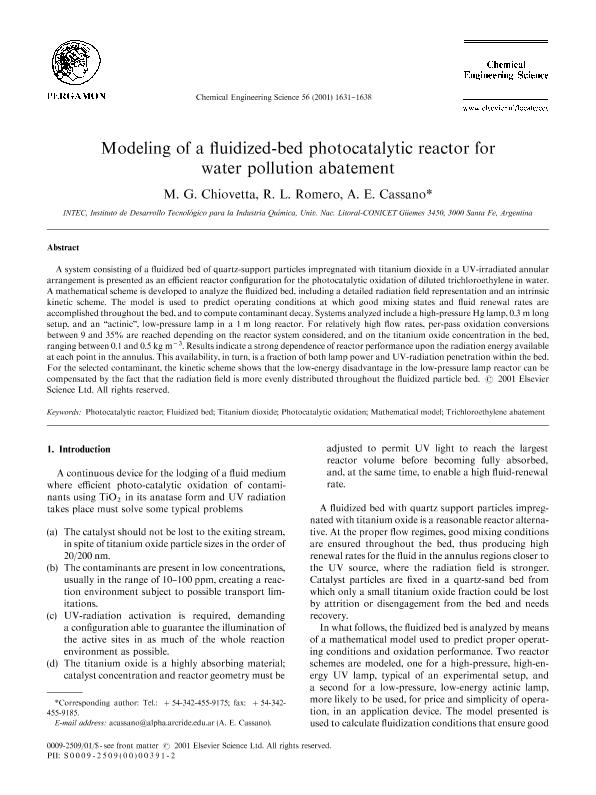Artículo
Modeling of a fluidized-bed photocatalytic reactor for water pollution abatement
Fecha de publicación:
12/2001
Editorial:
Pergamon-Elsevier Science Ltd.
Revista:
Chemical Engineering Science
ISSN:
0009-2509
Idioma:
Inglés
Tipo de recurso:
Artículo publicado
Clasificación temática:
Resumen
A system consisting of a fluidized bed of quartz-support particles impregnated with titanium dioxide in a UV-irradiated annular arrangement is presented as an efficient reactor configuration for the photocatalytic oxidation of diluted trichloroethylene in water. A mathematical scheme is developed to analyze the fluidized bed, including a detailed radiation field representation and an intrinsic kinetic scheme. The model is used to predict operating conditions at which good mixing states and fluid renewal rates are accomplished throughout the bed, and to compute contaminant decay. Systems analyzed include a high-pressure Hg lamp, long setup, and an “actinic”, low-pressure lamp in a long reactor. For relatively high flow rates, per-pass oxidation conversions between 9 and 35% are reached depending on the reactor system considered, and on the titanium oxide concentration in the bed, ranging between 0.1 and . Results indicate a strong dependence of reactor performance upon the radiation energy available at each point in the annulus. This availability, in turn, is a fraction of both lamp power and UV-radiation penetration within the bed. For the selected contaminant, the kinetic scheme shows that the low-energy disadvantage in the low-pressure lamp reactor can be compensated by the fact that the radiation field is more evenly distributed throughout the fluidized particle bed.
Archivos asociados
Licencia
Identificadores
Colecciones
Articulos(INTEC)
Articulos de INST.DE DES.TECNOL.PARA LA IND.QUIMICA (I)
Articulos de INST.DE DES.TECNOL.PARA LA IND.QUIMICA (I)
Citación
Chiovetta, Mario Gabriel; Romero, Roberto Leopoldo; Cassano, Alberto Enrique; Modeling of a fluidized-bed photocatalytic reactor for water pollution abatement; Pergamon-Elsevier Science Ltd.; Chemical Engineering Science; 56; 4; 12-2001; 1631-1638
Compartir
Altmétricas




